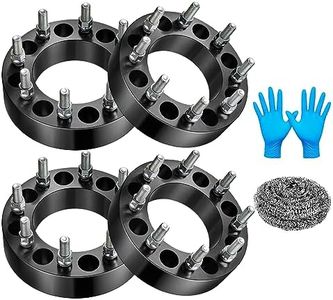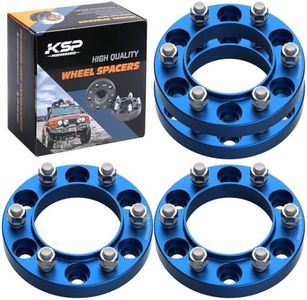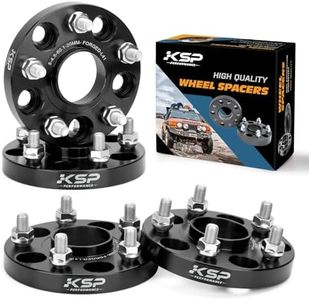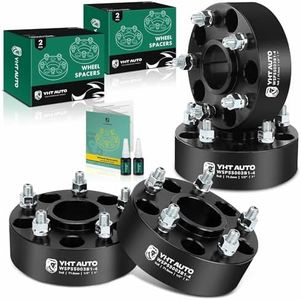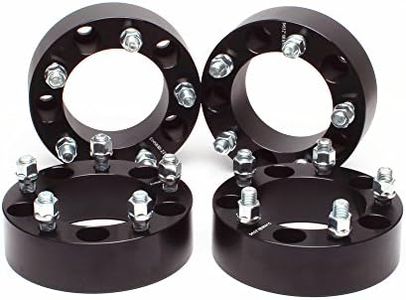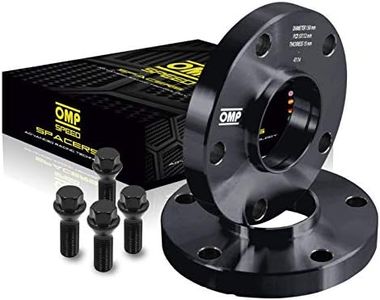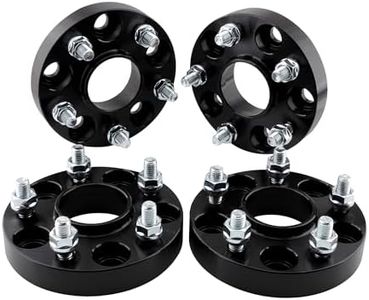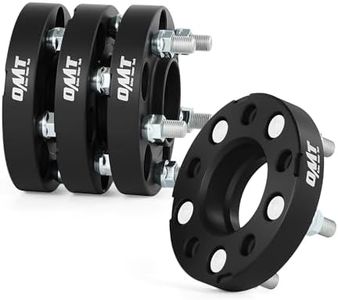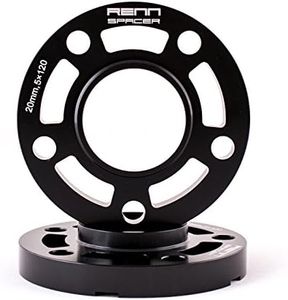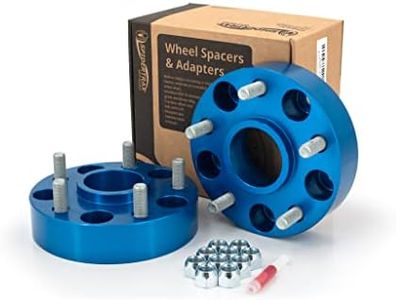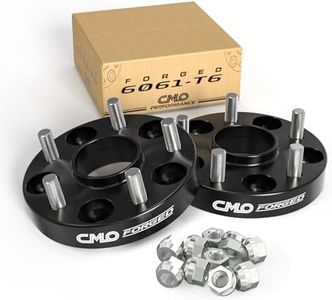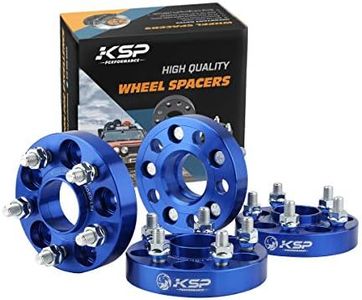We Use CookiesWe use cookies to enhance the security, performance,
functionality and for analytical and promotional activities. By continuing to browse this site you
are agreeing to our privacy policy
10 Best Wheel Spacers
From leading brands and best sellers available on the web.By clicking on a link to a third party's website, log data is shared with that third party.
Buying Guide for the Best Wheel Spacers
When choosing wheel spacers, it's important to understand their role: they help push your wheels outward from the hub, which can enhance the look of your vehicle, improve stability, or solve clearance issues. However, the right set must fit your vehicle’s design, your intended purpose, and maintain safe operation. A thoughtful approach means looking at key specifications to make sure the spacers are a safe and beneficial match for your needs.Spacer ThicknessSpacer thickness determines how far out your wheels will sit from the hub. This is usually measured in millimeters or inches. Thin spacers (3mm-10mm) are great for addressing minor clearance issues, like making room for brake calipers, while medium (10mm-20mm) and thick spacers (20mm or more) are more for achieving a wider stance or fitting wider tires. It's important not to go too thick without checking fender clearance and overall suspension geometry. Choose a thickness based on whether you want a subtle look or a dramatic, aggressive stance, but always ensure the tire still fits within the wheel well safely.
Bolt PatternThe bolt pattern describes the arrangement of the holes on the spacer that match your vehicle’s hub and wheel. It usually looks something like '5x114.3,' meaning five holes spaced 114.3mm apart. Making sure the spacer's bolt pattern matches both your vehicle's and wheels' is necessary for a proper and secure fit. Always check your vehicle manual or existing wheels for this measurement to avoid fitment issues.
Center BoreThe center bore is the hole in the middle of the spacer that centers it on the hub. A correct fit keeps the wheel perfectly centered, reducing vibrations and ensuring proper load distribution. Spacers can be hub-centric (fitting snugly on the hub and wheel) or lug-centric (centered only by the lug nuts). If you want optimal performance and comfort, hub-centric spacers are generally recommended for road vehicles, especially if you’re sensitive to vibrations.
Material and StrengthSpacers are typically made from aluminum or steel. Aluminum spacers are lighter and often coated to resist corrosion, making them good for everyday use or performance driving. Steel spacers are stronger but heavier, suitable for heavier vehicles or off-road use. The spacer's strength affects safety and durability, so consider what kind of driving you’ll be doing. For most passenger cars, high-quality aluminum spacers are suitable, but if you plan on tough conditions or hauling heavy loads, sturdier options may be better.
Type: Slip-On vs. Bolt-OnSlip-on spacers slide over your vehicle's existing studs and require longer wheel bolts or studs for safe install, typically used for thinner spacers. Bolt-on spacers attach to the hub with their own set of bolts, and your wheels then bolt onto the spacers, commonly used for thicker sizes. If you only need a small change, slip-ons can be simpler, but for larger adjustments, bolt-ons provide a more secure and safer fit.

